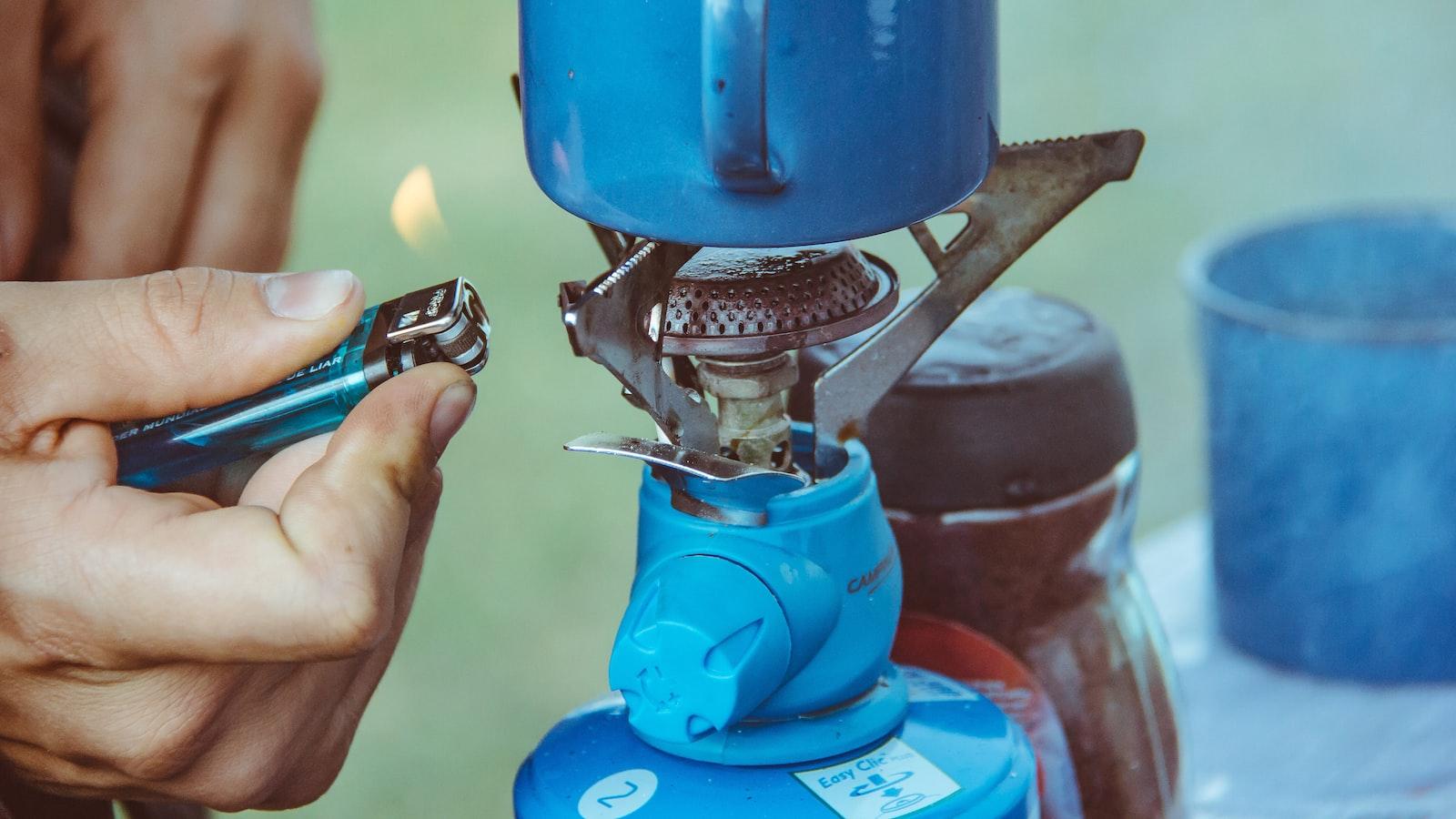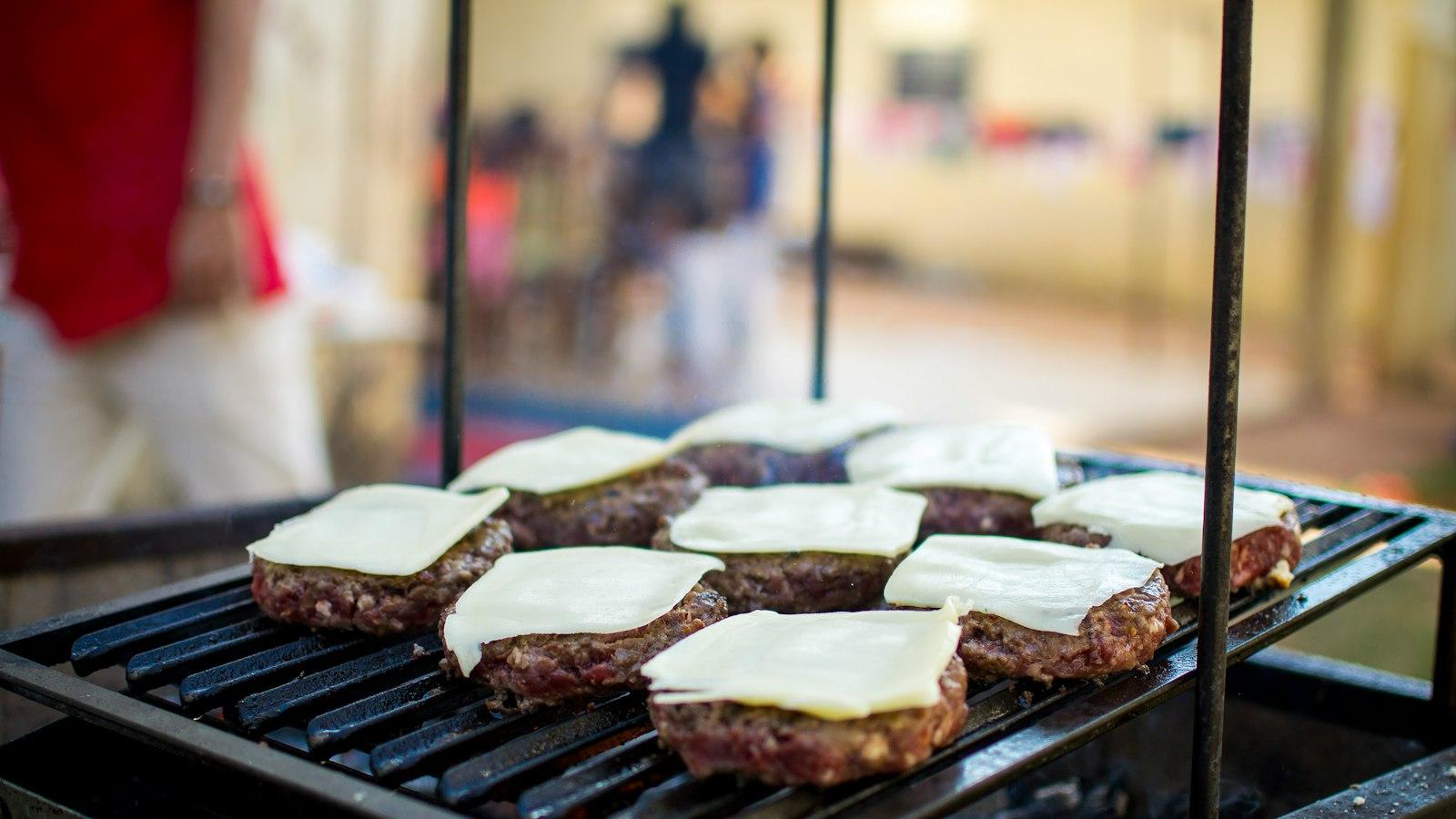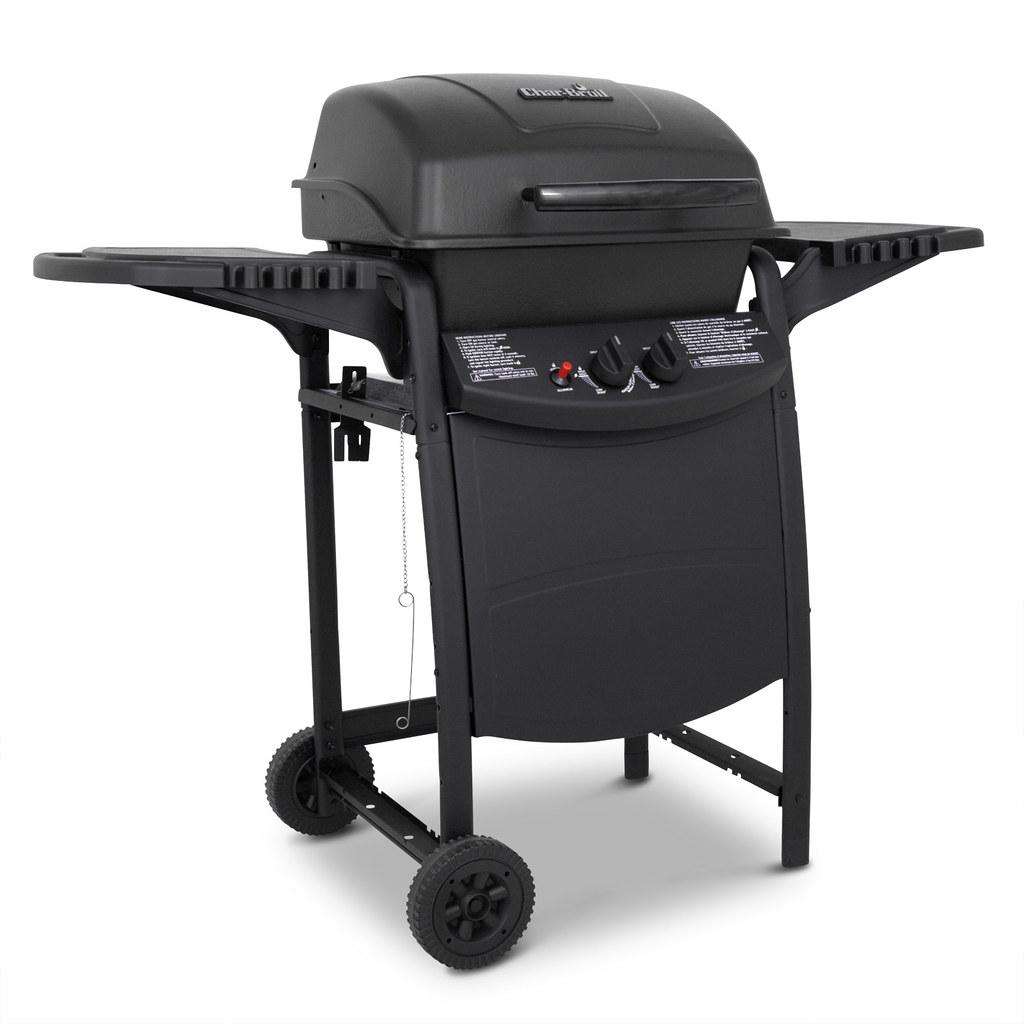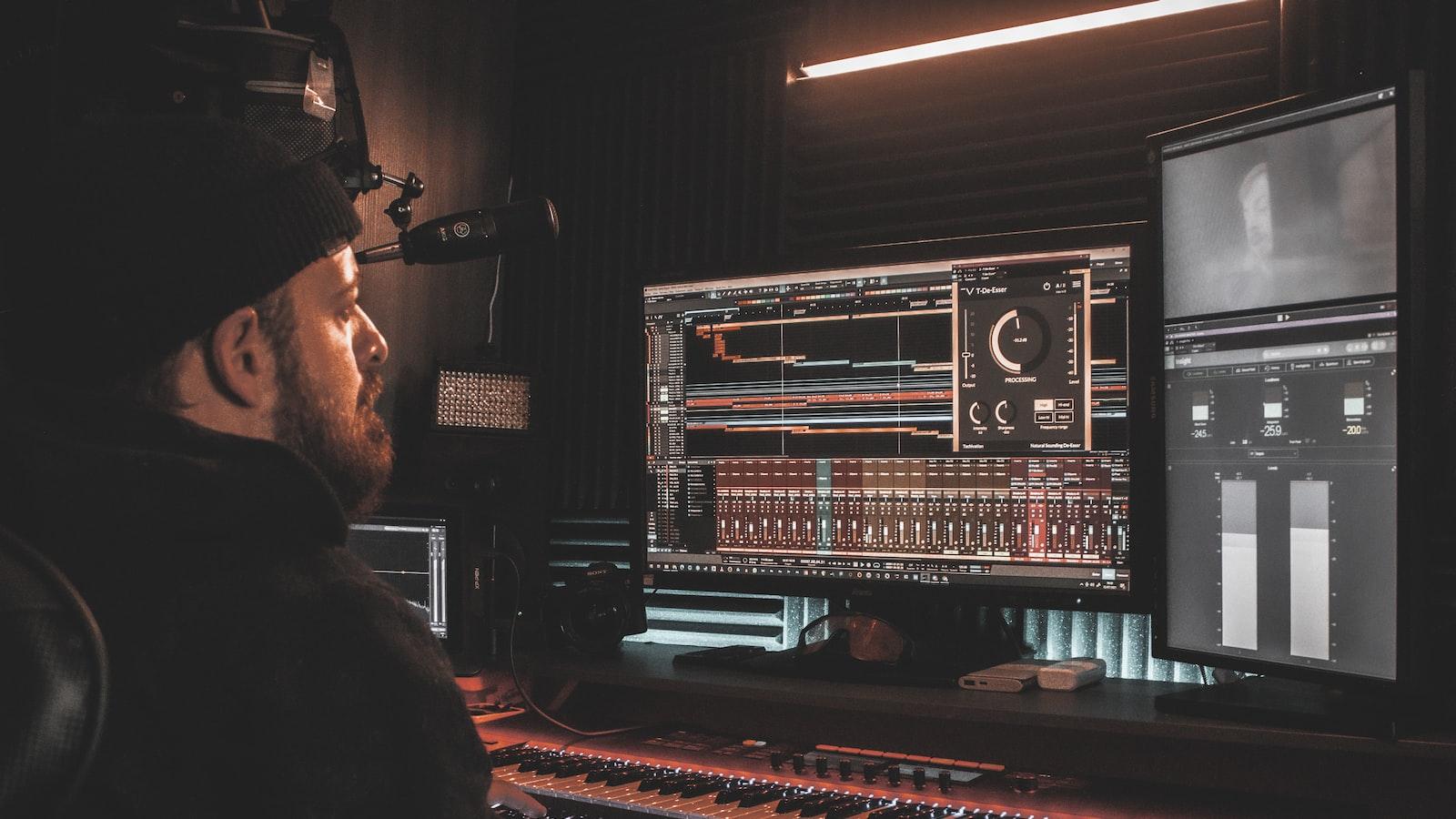
Gas grilling is a popular and efficient way to cook up a mouthwatering barbecue feast. This article will guide you through everything you need to know about using a gas grill, from choosing the right one to firing it up and mastering essential grilling techniques. Whether you are a seasoned griller or new to the gas grilling game, this informative guide will ensure you rock your next cookout with confidence and precision. So, let’s dive right in and unlock the secrets to becoming a gas grilling pro!
Choosing the Right Gas Grill for Your Needs
Gas grills are a popular choice for outdoor cooking enthusiasts due to their convenience and ease of use. However, with so many options available on the market, it can be overwhelming to choose the right gas grill that suits your needs. To help you make an informed decision, here are some factors to consider when selecting a gas grill:
Cooking Area: The size of the cooking area is an important consideration when choosing a gas grill. Determine how much space you need to accommodate your regular grilling needs. If you often cook for a large group of people, a grill with a spacious cooking area is essential. On the other hand, if you have limited outdoor space or typically cook for a small family, a compact grill would be more suitable.
BTU Output: BTU, or British Thermal Units, is a measurement of a gas grill’s heat output. Higher BTU ratings generally indicate a hotter grill that can cook food faster. However, it’s important to remember that higher BTUs alone do not guarantee better performance. Pay attention to the design and functionality of the grill as well, as these factors can significantly impact cooking efficiency.
Construction and Durability: Look for a gas grill that is well-constructed and made from high-quality materials. Stainless steel is a common choice due to its durability and resistance to rust. Additionally, consider features like heavy-duty grates and sturdy wheels, which can enhance the overall longevity of the grill.
Additional Features: Gas grills often come with a variety of additional features that can enhance your grilling experience. Some common features include side burners for cooking side dishes, built-in thermometers for temperature monitoring, and adjustable racks for versatile cooking options. Think about the specific features that would be useful to you and prioritize them accordingly.
Price: Gas grills are available at various price points, so it’s essential to set a budget before you start shopping. Consider the features and specifications that are most important to you and find a grill that offers a good balance between quality and affordability. Remember, investing in a reliable and durable gas grill can save you money in the long run by reducing the need for frequent replacements or repairs.
Finding the right gas grill for your needs can greatly enhance your outdoor cooking experience. By considering factors such as cooking area, BTU output, construction, additional features, and price, you’ll be able to make an informed decision and choose a gas grill that meets your requirements. So, get ready to fire up that grill and enjoy delicious meals with family and friends in the great outdoors!

Understanding the Gas Grill Components and Functions
Gas grills are a popular choice for outdoor cooking due to their convenience and ability to quickly heat up. To fully utilize the power of a gas grill, it’s important to understand its various components and functions. In this post, we will delve into the inner workings of a gas grill and provide you with a comprehensive guide on how to use it effectively.
- Gas Source:
- The gas source for a gas grill is usually propane or natural gas.
- Propane gas grills use portable propane tanks, which can be easily attached and detached.
- Natural gas grills require a fixed gas line connection, so they are more suitable for stationary installations.
- Burners:
- The burners are responsible for generating heat and distributing it evenly across the cooking surface.
- Most gas grills have multiple burners, allowing you to control different heat zones and cook multiple dishes simultaneously.
- The burners are typically made of stainless steel or cast iron, offering durability and even heat distribution.
- Ignition System:
- The ignition system is used to start the gas grill by igniting the gas.
- There are two main types of ignition systems: manual and electronic.
- Manual ignition systems require the use of matches or lighters, while electronic ignition systems use a button or switch to generate a spark.
- Cooking Grates:
- The cooking grates are where you place your food for grilling.
- They are usually made of cast iron, stainless steel, or porcelain-coated materials.
- Cast iron grates provide excellent heat retention and those coated with porcelain are easy to clean.
- Control Panel:
- The control panel is where you can adjust the heat for each burner and monitor the temperature.
- It usually consists of knobs or dials that allow you to control the gas flow and adjust the flame intensity.
- Some gas grills even have advanced features like built-in thermometers and backlit control panels.
Understanding the components and functions of a gas grill is crucial for using it efficiently and achieving the desired results. From the gas source to the control panel, each part plays a significant role in the grilling process. So, before you fire up your gas grill for a sizzling cookout, take the time to familiarize yourself with its inner workings and unleash your grilling prowess with confidence.
| Component | Function |
|---|---|
| Gas Source | Provides fuel for the grill |
| Burners | Generate and distribute heat evenly |
| Ignition System | Starts the grill by igniting the gas |
| Cooking Grates | Where food is placed for grilling |
| Control Panel | Allows you to adjust heat and monitor temperature |

Preparing Your Gas Grill for Use
Before you start grilling with your gas grill, it’s essential to properly prepare it for use. By following these steps, you can ensure a safe and enjoyable grilling experience. Remember to always refer to your specific grill’s manual for any manufacturer recommendations or instructions.
1. Clean the grill grates
To remove any dirt, debris, or leftover residue from your previous grilling sessions, give your grill grates a thorough cleaning. Use a grill brush to scrape off any burnt-on food particles and then wipe clean with a damp cloth. This step is crucial to avoid any unwanted flavors being transferred to your food and to prevent flare-ups during cooking.
2. Check the gas supply
Before you fire up the grill, make sure you have enough gas in the tank. Check the fuel level by looking at the gas gauge or weight indicator. If the tank is low, it’s time to refill or replace it. Additionally, inspect the gas hose for any cracks, leaks, or signs of damage. If you notice any issues, replace the hose before using the grill.
3. Test for leaks
Safety should always be a priority when using a gas grill. To ensure there are no gas leaks that could lead to dangerous situations, perform a simple leak test. Apply a solution of soapy water to the connection points between the propane tank, regulator, and hose. If you see bubbles forming, there is a leak. Tighten the connections or replace any faulty parts before proceeding.
4. Adjust the burners
Properly functioning burners are crucial for maintaining an even heat distribution on your grill. Inspect each burner to ensure it is clean and free from blockages. Take note of any damaged or rusted burners that may need replacement. If your grill has adjustable burners, refer to your manual for instructions on adjusting the flame height and temperature control.
5. Preheat the grill
To optimize your grilling experience, preheating your gas grill is essential. Close the lid and turn on the burners to the highest heat setting. Allow the grill to heat up for about 10-15 minutes, or until it reaches the desired cooking temperature. Preheating ensures even cooking and helps to prevent sticking of the food to the grates.

Mastering Essential Techniques for Gas Grilling
Gas grilling is an efficient and convenient way to cook delicious meals in the great outdoors. Whether you’re a grilling novice or an experienced cook, understanding the essential techniques for gas grilling will help you achieve the perfect cook every time. In this post, we will explore the key techniques that will take your grilling skills to the next level.
Preparing the Grill:
Before firing up your gas grill, it’s important to ensure that it is clean and ready for use. Start by brushing off any debris from the grates using a grill brush. Next, remove the grates and thoroughly clean them with warm soapy water. Rinse and dry the grates before placing them back onto the grill. Finally, clean the exterior of the grill and check that the gas tank is not empty.Preheating the Grill:
Preheating the grill is a crucial step in achieving the perfect cook. Simply turn the gas knob to high and close the lid. Allow the grill to preheat for about 10-15 minutes, or until it reaches the desired temperature. Preheating not only ensures even cooking but also helps to prevent food from sticking to the grates.Proper Heat Zones:
Understanding heat zones is essential for controlling the cooking process. Most gas grills have at least two heat zones – direct and indirect heat. Direct heat is ideal for searing meats and achieving that desirable grill marks, while indirect heat is perfect for slow-cooking larger cuts of meat.Perfect Timing:
Timing is everything when it comes to gas grilling. Keep a close eye on your food and use a timer to prevent overcooking or undercooking. It’s also important to let your cooked food rest for a few minutes before serving. This allows the juices to redistribute, resulting in a more flavorful and tender meal.Safety Tips:
While gas grilling is generally safe, it’s important to take proper precautions. Always keep a fire extinguisher nearby in case of emergencies. Additionally, make sure the grill is situated in a well-ventilated area and away from any flammable materials. Never leave the grill unattended and be cautious of flare-ups, which can occur when fat drips onto the flames. Lastly, remember to turn off the gas supply and clean the grill thoroughly after each use.
By mastering these essential techniques, you’ll be well on your way to becoming a gas grilling expert. So fire up that gas grill, get creative with your marinades and rubs, and enjoy the delicious flavors that only a gas grill can deliver!
Tips for Cleaning and Maintaining Your Gas Grill
Gas grills are a popular choice for outdoor cooking, providing convenience and quick heat for delicious meals. To keep your gas grill in top shape and ensure it lasts for many seasons to come, proper cleaning and maintenance are essential. Follow these tips to keep your gas grill looking and performing its best.
Clean the grill grates: Start by removing the grates from your gas grill. Scrub them with a wire brush to remove any stuck-on food particles or debris. For a deeper clean, soak the grates in warm, soapy water for a few minutes before scrubbing. Rinse well and pat dry before reattaching them to the grill.
Check the burners: Over time, burners can become clogged with grease and food residue, affecting their performance. Carefully remove the burners from your gas grill and inspect them for any signs of blockage. Use a wire brush or a pipe cleaner to clear away any debris. If necessary, replace any damaged or corroded burners for optimal heat distribution.
Clean the drip tray: The drip tray is where grease and drippings collect during grilling. To prevent flare-ups and potential damage to your gas grill, it’s important to regularly clean and empty the drip tray. Remove the tray and scrape off any solid residue. Wash it with warm, soapy water and dry thoroughly before placing it back into the grill.
Inspect the gas lines: Gas leaks can be hazardous, so it’s crucial to regularly inspect the gas lines of your grill. Check for any cracks, kinks, or signs of wear. If you notice any issues, replace the gas line before using the grill again. Always ensure the gas connections are secure and tight to avoid leaks.
Cover and store properly: When not in use, protect your gas grill from the elements by covering it with a grill cover. Choose a cover that is specifically designed for your grill to ensure a proper fit. This will help prevent rust, corrosion, and damage caused by exposure to moisture and dust. Additionally, store your gas grill in a dry, well-ventilated area to maximize its lifespan.
Remember, regularly cleaning and maintaining your gas grill will not only extend its life but also ensure safer and more efficient grilling experiences. By following these tips, you’ll be able to enjoy deliciously grilled meals for years to come. Happy grilling!
Q&A
Q: What are the essential steps to using a gas grill?
A: To use a gas grill, follow these essential steps: 1) Ensure the grill is in a safe and open area with proper ventilation. 2) Check the gas supply and connect the propane tank securely. 3) Open the grill lid and turn on the gas by opening the valve on the propane tank. 4) Ignite the grill using the built-in ignition switch or a long lighter. 5) Preheat the grill for about 10-15 minutes, with the lid closed, until it reaches the desired temperature.
Q: How do I control the temperature on my gas grill?
A: Most gas grills have temperature control knobs that allow you to adjust the heat output. To raise the temperature, turn the knobs clockwise, while turning them counterclockwise will lower the heat. Additionally, you can control the temperature indirectly by adjusting the burners’ exposure to the food. For instance, if you want lower heat, turn off one or more burners and place the food over the inactive burner(s).
Q: What are some safety precautions to consider when using a gas grill?
A: Safety should always be a priority when using a gas grill. Here are some precautions to follow: 1) Read the manufacturer’s manual and familiarize yourself with the grill’s specific safety instructions. 2) Keep the grill in an open space away from flammable materials, buildings, or low-hanging branches. 3) Regularly inspect and maintain the grill, checking for gas leaks, damaged hoses, or worn-out parts. 4) Ensure the grill is turned off and the gas supply is disconnected when not in use.
Q: How should I clean my gas grill?
A: Cleaning your gas grill regularly is essential to maintain its performance and prolong its lifespan. Here’s how to clean it: 1) Allow the grill to cool down completely before cleaning. 2) Remove the grates, burners, and flame tamers (if applicable) and scrub them with a grill brush to remove any built-up residue. 3) Wipe the exterior surfaces of the grill with warm soapy water or a grill cleaner, especially paying attention to grease buildup. 4) Rinse all removable parts thoroughly, reassemble the grill, and make sure it is completely dry before using it again.
Q: What are some common mistakes to avoid while using a gas grill?
A: To ensure a successful grilling experience, it’s important to avoid these common mistakes: 1) Neglecting to preheat the grill properly, which can result in uneven cooking. 2) Overloading the grill with food, as it can lower the temperature and cause inadequate results. 3) Constantly lifting the grill lid to check on the food, as this can cause temperature fluctuations. Instead, use a meat thermometer to monitor doneness. 4) Forgetting to clean the grill regularly, leading to reduced performance and potentially even a fire hazard. In conclusion, mastering the art of using a gas grill can truly elevate your outdoor cooking experience. By following these simple steps, you can ensure a safe and efficient grilling session every time. Remember to start by prepping the grill and gathering all necessary tools and ingredients. Always prioritize safety by checking for leaks and keeping a fire extinguisher close at hand. Adjust the heat settings to achieve the desired level of doneness and utilize direct and indirect grilling techniques for different types of food. Regularly clean and maintain your grill to extend its lifespan and prevent any mishaps. Finally, don’t forget to experiment and have fun with different recipes and flavors to truly make the most of your gas grill. With practice and a little knowledge, you’ll soon become a grilling pro. So fire up that grill, gather your loved ones, and savor the delightful moments that come with outdoor cooking.






